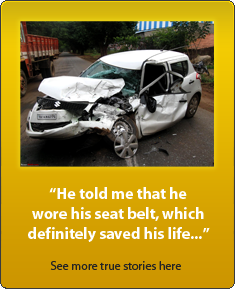News
Delhi smog causes traffic woes, accidents
The pollution levels in Delhi and the surrounding NCR have peaked this month. Record levels of PM 2.5 and PM 10 suspended particles have caused low visibility and health problems, resulting in the enforcement of drastic measures by the government.
In the first week of November 2017, the cooler weather, stagnant winds and uncontrolled stubble burning, garbage burning, road dust, industrial pollution and construction & demolition activities caused high levels of smog in the region along with a severe drop in visibility. According to data taken on the 7th November, PM 2.5 levels reached a peak of 999 mg, much above the tolerable levels of 60 mg, whereas PM 10 levels shot up to 999 as well, far above the permissible levels of 100 mg. It must be noted that 999 is the maximum reading that can be displayed on the testing equipment.
The low visibility caused due to the smog causes severe hardships for the motorists as well as other road users. Apart from health issues, the smog makes it difficult to drive on the roads. It has also been reported that the low visibility has delayed trains, flights and even movement of vehicles across the region. The Yamuna Expressway witnessed a big vehicle pile-up due to extremely low visibility on November 8.
In an attempt to bring the problem under control, the Chief Minister of Delhi had announced a slew of measures. These included shutting down schools for 3 days last week, a ban on diesel gensets, shut down of the coal based Bharatpur power plant for 10 days, ban on construction and demolition activities in the region, water sprinkling on the roads of Delhi and the implementation of the odd-even scheme this week.
The odd-even scheme, however, stands cancelled by the Delhi Government as of today, as the NGT has made no exception for women drivers and two-wheelers like the last time. Additionally, in a bid to increase the use of public transportation and demotivate individual car owners, the car parking rates have been hiked four-fold to Rs. 80 per hour in the capital.
The government and other authorities has always blamed vehicles for the severe pollution in the region and introduced drastic bans. In December 2015, the registration of diesel cars with engines larger than 2,000cc was prohibited in the NCR citing the rising levels of pollution in the region. This ban was lifted in August 2016, but car makers had to pay a 1% cess on the ex-showroom price of the vehicles.
The odd-even scheme was first enforced in January 2016 and later in April 2016. Exemptions were given to women drivers, cars carrying children in school uniform, CNG cars and vehicles of chief ministers of other states. This rule was applicable from 8 am to 8 pm from Monday to Saturday and a penalty of Rs. 2,000 was imposed on anyone flouting the norms. These bans caused inconvenience to the motorists.
However, it must be noted that vehicular emissions contribute to a small percentage of the total pollution. As we have mentioned earlier, the major contributors to this smog are the smoke emitting from stubble burning and the vast construction activities happening in the region. If the authorities want to bring the situation under control, these issues need to be addressed at the earliest.
Sources - NDTV, Indian Express, TOI











.jpg)







